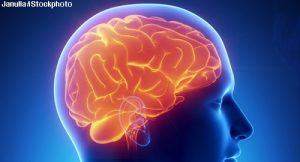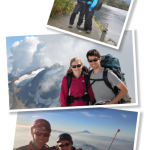 BALTIMORE—The autonomic nervous system is a marvel of coordinated physiology, but when things go awry, the resulting symptoms patients experience can be severe.
BALTIMORE—The autonomic nervous system is a marvel of coordinated physiology, but when things go awry, the resulting symptoms patients experience can be severe.
At the 20th Annual Advances in the Diagnosis and Treatment of the Rheumatic Diseases symposium at Johns Hopkins School of Medicine, Brit Adler, MD, assistant professor of medicine, Division of Rheumatology, Johns Hopkins School of Medicine, Baltimore, greatly expanded the cognitive horizons of the audience in her talk titled, Dysautonomia and POTS: What the Rheumatologist Should Know.
What Is POTS?
To begin her lecture, Dr. Adler explained that postural orthostatic tachycardia syndrome (POTS) was thought to affect between 500,000 and 3 million people in the U.S. before the COVID-19 pandemic.1 Currently, it’s believed this number may be much higher, although more research is needed.2
POTS is most commonly seen in young women, and symptoms can include fatigue, brain fog, headache, orthostatic intolerance, muscle pain and difficulty with exercise. Patients may be classified with POTS if they experience the following for at least six months:
- An increase in heart rate ≥30 beats per minute within 5–10 minutes of standing or upright tilt;
- The absence of orthostatic hypotension; and
- Lightheadedness, palpitations and tremulousness that occur with standing.3
Dr. Adler explained that the pathophysiology of POTS involves sympathetic vasomotor dysfunction leading to venous pooling on standing and exertional intolerance. Secondary sympathetic activation leads to tachycardia. Through these mechanisms, POTS is often associated with other symptoms of dysautonomia, including Raynaud’s phenomenon; urinary symptoms, such as loss of bladder control and difficulty voiding; and gastrointestinal symptoms, such as diarrhea or constipation.
The presence of hypertension in a patient does not rule out the possibility of their having POTS. Patients with hyperadrenergic POTS, which is thought to affect about 30–60% of all patients with POTS, typically demonstrate a systolic blood pressure increase of ≥10 mmHg during tilt along with tachycardia. This subtype of POTS is thought to result from elevated standing plasma norepinephrine levels in the hyperadrenergic state, which leads to an exaggerated sympathetic response with excessive orthostatic tachycardia. These patients typically experience such symptoms as palpitations, abdominal pain, nausea and hyperhidrosis, all of which are worsened with physical exertion and emotional stress.
Dr. Adler explained that POTS is a heterogeneous syndrome with a diverse set of potential etiologies and mechanisms. These include immune-mediated processes, such as infections (e.g., COVID-19, Lyme disease, Epstein-Barr virus), autoimmune conditions (e.g., Sjögren’s disease, systemic lupus erythematosus, Celiac disease) and vaccinations. Non-immune mediated processes may include Ehlers-Danlos and other hypermobility syndromes, concussions, genetic disorders and neurodegenerative diseases, such as multiple system atrophy. Other conditions, such as fibromyalgia, interstitial cystitis and mast cell activation syndrome, are connected to POTS because they all may result in small-fiber neuropathy.



